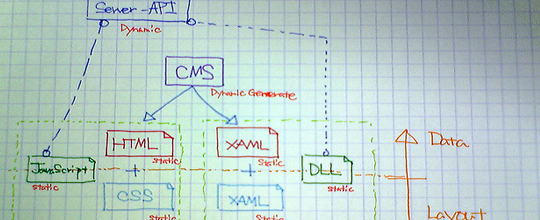Everything seems to be moving at such a faster pace than it used to. We’re seeing instantaneous developments and access to information like never before through the likes of Google and Wikipedia. All of this information has me questioning where the future of web design is heading.
Although it’s not so easy to read the future we can make some heavy conclusions and predictions about where things are heading. With current trends in the design landscape unfolding we’re starting to see paths illuminate and new ideas sprouting up. Those of us who follow these trends will be the designers who can rise above the rest and fill into the new age of technology.
Growth in User Experience
With rise given to the social media generation we’re seeing more Internet users engaged than ever before. The world wide web historically was stable ground where all pages were static digital text and images. Today we’re seeing so much more complexity and form integrated into standard web applications.
This is reflected by a rise in participation from Internet users. There are more areas today for people to interact with websites than ever before. Social networking, blog comments, live chats, and photo sharing websites are just a few to be named.

The future of web is going to bolster even further growth with user interaction. We can imagine users creating their own styles and ideas for how they want to see websites created. Variant font sizes and families are already available in most modern browsers today. When will we hold the ability to re-size websites or recolor difficult-to-read text?
Most would agree this paradigm shift comes with a heavy twofold effect. With more people accessing and contributing to the web we’re seeing less interaction required by web designers. Digital artists are able to focus on what they love most – art!
Cloud Computing Ramps Up
As web professionals we are all too familiar with hosting companies. Some are great, some are a bit more difficult, but regardless every site online requires some form of hosting. The most common is renting space on either a physical or virtual machine in a server farm somewhere around the world.

As cloud computing grows and becomes more available we’ll start to see websites being hosted “in the cloud”. By this I mean clusters of server farms will hold the site information and process backend scripts behind the scenes. Visitors will benefit seeing drastically improved load times.
On the design end of things this may also spell out room for powerful new tools. With such a surplus of power it’s no doubt developers will rush to create the first in-browser Photoshop or Illustrator equivalent. This process would flip the web design industry on it’s head for the first time in decades.
Dynamic Form Values
We’ve all seen fancy Ajax-style forms which can check if your password or e-mail address is valid on the fly. What most of us don’t see is the backend development required to create such functionality. With the power of open source scripts such as jQuery these effects are becoming much easier to create.
So how easy is it going to be filling out forms in the next web? I can imagine the signup process to be much simpler than we’ve ever seen. People logged into their Google or Facebook account may even be able to pull data directly from their profile to fill in blank fields automatically.

This process brings to the surface an even deeper idea which removes most signup pages altogether. With Oauth on it’s rise to stardom we’re seeing many applications offering profile creation through Facebook Connect and Twitter Connect. This provides a massive benefit since no password data is actually stored on anyone’s servers and you’re authenticated into a website within a few clicks.
Dynamic web design trends will allow for even further customization of this by possibly linking all of your accounts together. We could imagine HTML or JS properties being created to work with this data and apply it to web applications.
Even more interesting is how CSS will develop over the next few years. The release of CSS3′s specs has shown serious promise for browsers willing to support the new selectors. How far away are we from creating dynamic graphics or gradients directly from code?

This is one of the most exciting times to be active in the design industry. We’re seeing innovation all around and every month something new is being created or worked on. Trends will come and go over time and with each passing era we’ll see a huge leap forward in digital technology.
Keep your eyes open for some of the latest articles discussing where the future of our web is going. It’s hard to predict exactly where we can see web design in 5 years. But as we enter into the first quarter of 2011 it’s becoming clear just how quickly we’ll be finding out.
Comments
Post a Comment